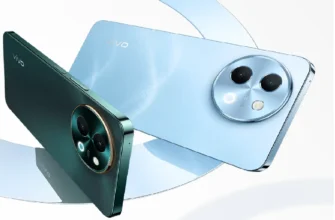With the development of smartphones today, fast charging has become almost a standard configuration. In the Android camp, the development of fast charging is quite popular.
While Apple is thinking about introducing 25W fast charging on the iPhone 13 series, the Android camp is already working on 200W fast charging. The likes of Huawei, Oppo, Xiaomi, Vivo, etc. are working hard on the fast charging feature, from 20W a few years ago to 120W now.
It is important to note that fast charging technology is "systems engineering". This means that a combination of different aspects is required to form a system. We have fast chargers, chargers and charging protocol as separate aspects of fast charging technology.
With the development of fast charging, there seems to be a bottleneck. Here are the top five (5) top smartphone fast charging trends right now.

High charging capacity (charging speed) is not everything
Previously, there was an impression that as soon as a smartphone supports powerful charging, that's it. High power is no longer the only strength point for fast charging. In just 7 years, the charging speed has increased from 20W to 200W and is now the standard for most smartphones.
With the industry operating at 200W, we are now at the peak of high power charging. This does not mean that there will be no further increase, but the increase will be slow. At the moment, fast charging is no longer just a speed race, and the fulcrum of industrial competition is gradually shifting. Now there will be a battle for improvement user experience charging

As we focused on speed, we didn't focus too much on battery safety hazards, battery aging and chaotic charging protocols. Now the new competition will be in these areas.
The industry is now moving away from charging speeds into some other areas, as we'll see below. From slow charging to fast charging, charging speed has always been an important subject of competition. As the industry enters the “post-fast charging era,” the pursuit of speed isn't the only focus.
Charging safety is becoming more and more important
According to an industry expert, "No matter how charging technology evolves, safety is always a top factor." In the era of fast charging, fast charging speeds require high-speed charging and discharging of batteries, which accelerates the reaction rate of the chemicals inside the battery. Only the reaction speed of polymer batteries can take a higher current. Otherwise, the large capacity and high speed will cause more risks to the security of the mobile phone charging system.
According to Anker's consumer research, the top consumer demand for chargers is not faster charging. Now users are looking for "safer charging". Improving charging safety mainly includes three aspects:
- Increase conversion efficiency using new materials
- Battery safety control with built-in power management chip
- Use of new technologies, structural designs, etc. to introduce security guarantees.
New materials are silicon-oxygen anode batteries and graphene batteries
A senior engineer at a veteran mobile phone maker said that in researching new battery materials, silicon-oxygen anode batteries and graphene batteries are the direction for industry development.
Embedded chips
Most manufacturers (both smartphone manufacturers and third-party manufacturers) now use a built-in power chip to ensure battery safety.
For example, a battery safety detection chip can monitor voltage drops in real time and intelligently detect whether the battery has internal damage. Oppo and Xiaomi have this technology. A third-party manufacturer, Anker, uses power management chips in its charger.
New technologies and construction design
Several manufacturers are already working on new technologies to provide safer fast charging. We have developments in low resistance fuses, Gallium Nitride (GaN) electronic switches, internal series dual cells, multi-layer protection batteries, etc. The Sandwich Protective Battery protects the battery from internal short circuits due to any external forces that could cause damage.
The term "sandwich safety battery" refers to the use of composite current collector technology (a new type of composite material as a matrix), and two layers of aluminum are coated with the most advanced technology to form a sandwich structure with coating on both sides of the structure. All of this will also be contained within a protective protective layer of the coating to form a five-layer protective structure.
Tests by multiple manufacturers show that this design is 100% Acupuncture and Impact Tested. There is absolutely no impact on the battery after impact. Now we see that the active development of battery protection is taking place.
Battery technology is developing
Fast charging is essentially complex system engineering. This system includes charging adapters, cables, PMIC power management integrated circuits, batteries and many other aspects. This is nowhere near enough to increase the power of the power adapter.
Previously, due to the limitations of technological development, various manufacturers focused on power adapters to increase the charging speed. However, as fast charging speeds increase to 65W or even more than 100W, there is a need for development. If there is no development, you will have cases where a 100W compatible device is charging at 15W.
Battery technology has become a key factor in current charging speeds
A senior industry expert said the next big change in fast charging technology is likely to be battery technology. “Of course, battery technology is the most difficult to break through. As soon as there is a breakthrough, we will see qualitative changes in the charging industry,” said industry experts.
Currently, different mobile phone manufacturers have different battery strengths. Xiaomi is more inclined to go out of the dimension of new materials. In March of this year, the company released silicon-oxygen anode batteries. However, Oppo decided to introduce AI into battery management to achieve smart charging.
Smart charging technology changes battery life, charging speed and temperature
Battery life: After 1500 full charge and discharge cycles, the battery has 80% capacity. In addition, the battery life is 3 times longer than the usual requirements of Chinese standards
Charging speed: Intelligently increases charging speed under certain demand scenarios. In high demand mode, the charging speed of the 65-watt fast charger can be increased by another 20%. This will allow the device to fully charge the 4500 mAh battery in 30 minutes
Efficiency of temperature rise: According to different usage scenarios, it can intelligently predict the current status and heating conditions. It will also dynamically match the charging power and achieve a balance between charging speed and temperature rise.
"Normalization" of the fast charging protocol
As mentioned earlier, smartphone fast charging technology is system engineering. In addition to hardware products such as devices and chargers, the charging protocol is also a part of this. This determines the communication method between the device and the charger.
Today, there are five main manufacturers of fast charging technologies with charging protocols in the mobile phone charging industry. We have Qualcomm, MediaTek, USB-IF Association, Huawei and Oppo. While the first three are public agreements, the last two are private agreements.

In the smartphone fast charging industry, there has always been a problem of protocol incompatibility. This results in only basic low power charging between branded mobile phones and chargers. In addition to affecting the charging speed of users, the incompatibility of the charging protocol causes the loss of resources to some extent, increasing the risk and cost of research and development in the upstream and downstream parts of the industrial chain.
Recognition of global charging protocols
In May of this year, the Telecommunication Terminal Industry Association issued an integrated fast charging standard, "Mobile Terminal Fast Charging Technical Specifications", hoping to promote the interoperability of various manufacturers in the fast charging technology agreement. Currently, this standard is supported by terminal manufacturers and supplier companies such as Huawei, Oppo, Vivo, Xiaomi, Honor, Silica, Rockchip, Lihui Technology, Angbao Electronics and Dianku Networks.
In addition, with the introduction of USB-C and the expansion of the USB-PD fast charging protocol, the industry has begun to gradually move towards compatibility. Currently, more manufacturers have announced compatibility with the PD protocol, including Apple, Samsung, Lenovo, Anker, and more.
It is not difficult to see that the tolling contract, which was previously divided into separate packages, is slowly closing. The general trend in the future should be towards unity. Regardless of Chinese or global, the charging protocol will be unified. This is a general and inevitable trend.
Wired charging can be replaced by wireless charging
In addition to the above changes, many industry experts believe that wireless charging is receiving a lot of attention. If this continues, it may replace wired charging.
In recent years, while constantly upgrading the charging speed of wired flash charging, various manufacturers have also made efforts to wirelessly charge flash. We understand that since 2018, mobile phone manufacturers including Huawei, Xiaomi, Meizu, Oppo and OnePlus have successively launched flash wireless charging solutions.
At the moment, the peak is Xiaomi's 80W wireless flash charging. We also have Oppo 65W AIRVOOC and Meizu 40W Vertical Wireless Charging. Despite the promise of wireless charging, there are still some bottlenecks to break through.
Bottlenecks for wireless charging
According to industry sources, most wireless fast chargers on the market can only charge short point-to-point distances. This has low flexibility and is not a true form of wireless charging. A senior engineer said: "The future wireless flash charging should be contactless, that is, when the mobile phone enters a certain range, it can automatically connect and charge."
Also, in terms of conversion efficiency, wireless charging has low conversion efficiency. It also experiences high power losses and serious heat production. This requires higher requirements for wireless charging speed and heat dissipation from the device.
OneZero and iFixit estimated that the average wireless charger uses 47% more energy than a wired charger. On average, 14,26 Wh is required to fully charge a mobile phone by wired method. Wireless chargers require an average of 21,01 W·h.
This was announced by Anker's director of research and development of innovative consumer products Li Mingkang
"When the charging speed approaches that of wired charging and the cost approaches the range of wired charging, wired charging may be replaced by wireless charging, but these technologies will take some time to overcome."
Visnovok
Fast charging of smartphones is actually at a mature stage. However, this does not mean "stagnation" in increasing the charging speed. On the contrary, it is more like a transition from "fast forward to the jogging stage". This means that the speed increase is still ongoing, but many other criteria are now on the agenda. Mobile phone manufacturers will now look away from speed. They will focus on security, battery life and other technologies. It will also improve the charging of users' devices.





